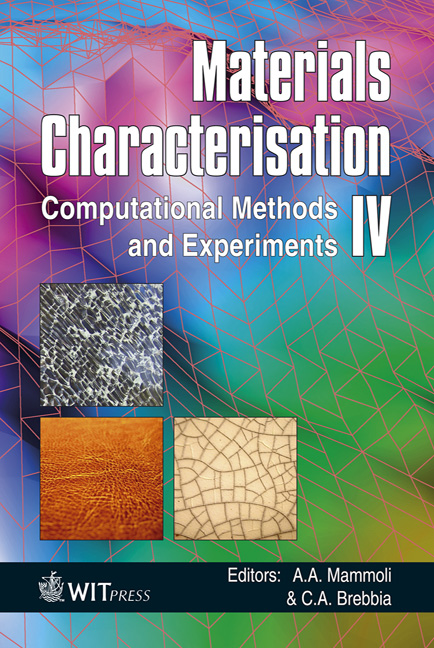Image Analysis Application In Metallurgical Engineering And Quality Control
Price
Free (open access)
Transaction
Volume
64
Pages
12
Page Range
259 - 270
Published
2009
Size
810 kb
Paper DOI
10.2495/MC090251
Copyright
WIT Press
Author(s)
Z. Odanović, M. Djurdjević, G. Byczynski, B. Katavić & V. Grabulov
Abstract
Image analysis (IA) is widely used in different areas of science such as medicine, biology and engineering. Quantitative measuring by image analysis has also found application in metallurgical engineering, especially in analyzing metallographic microstructures. The measuring of different microconstituents dimensions based on image analysis, performed in metallurgical investigations is presented in the paper. Determination of the brittle phase content in the function of the heat treatment temperature for the heat resistant Ni-Cr-Co-W alloy, with the aim of obtaining optimal microstructure for repair welding are presented. Results have shown that the best effect of the brittle phases dissolving is obtained at the temperature of 1250 oC. Investigation of the effects of Si (1-10%) and Cu (0.5-4.5 %) content, in the cast Al alloy for automotive application, on secondary dendrite arm spacing (SDAS) in the structure was performed. Results have shown that the higher silicon and copper contents reduced the size of the SDAS, which directly enable better mechanical properties of the cast product. The effect of different energy inputs, in the steel arc welding process, on the dimensions and geometry of the zones in a cross section of the welded joint was investigated. The heat affected zone (HAZ) of the welds is critical for the mechanical properties and weld quality and it is directly dependent on the energy input. The area and width of the HAZ for different heat inputs, from 0.4 to 1.4 kJ/mm, were measured by the IA. The obtained results have shown direct dependence of the measured dimensions from the energy input. The applied methodology enables weld quality control in the case of the automatic welding processes. All presented experimental results are based on a large number of measurements. A statistical analysis was performed and a high correlation of the results was obtained. For the each of the presented investigations and analyzed phenomenon, a statistical mathematical model is suggested with the boundary conditions defined by the investigated intervals of variables. Keywords: image analysis, Ni-Cr-Co-W alloys, cast Al alloys, steel welds.
Keywords
image analysis, Ni-Cr-Co-W alloys, cast Al alloys, steel welds





